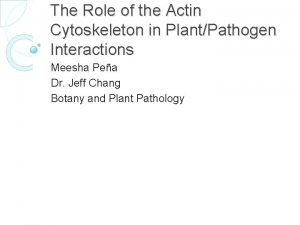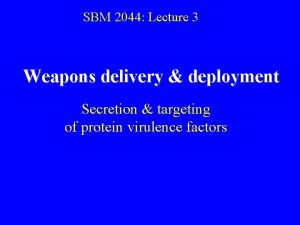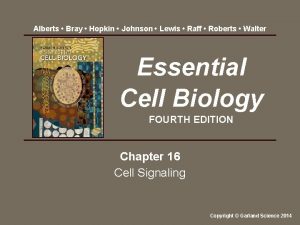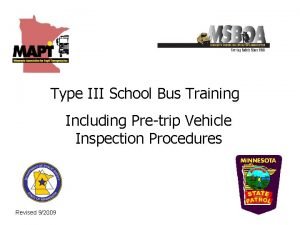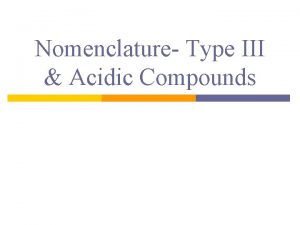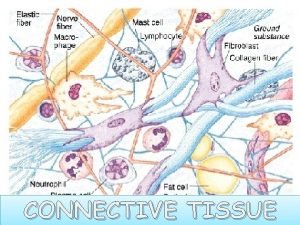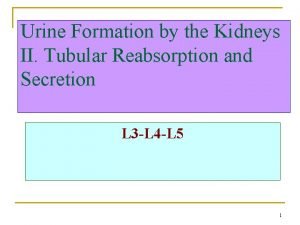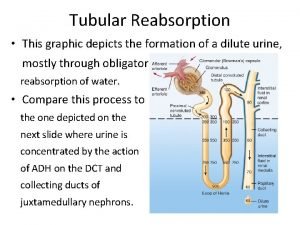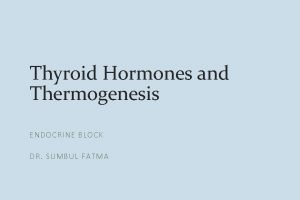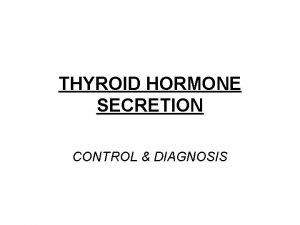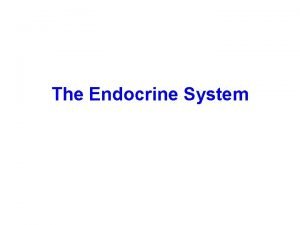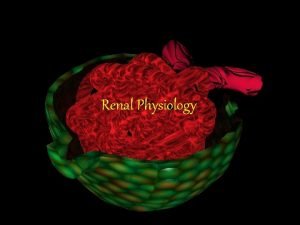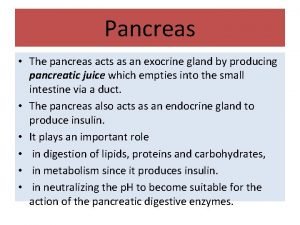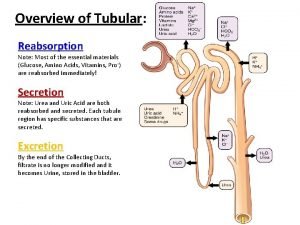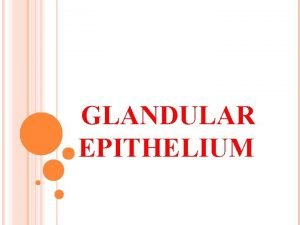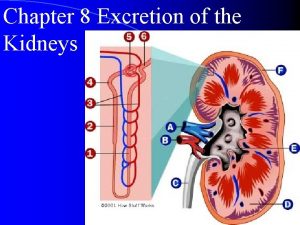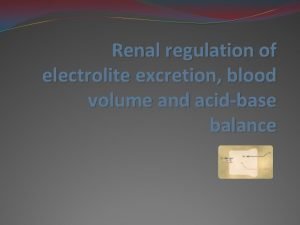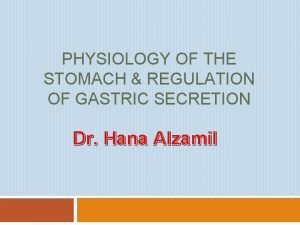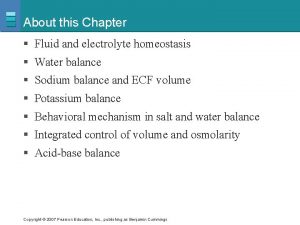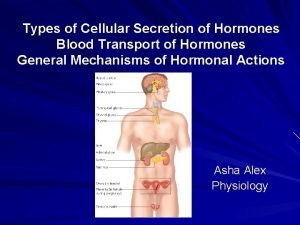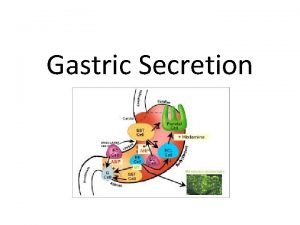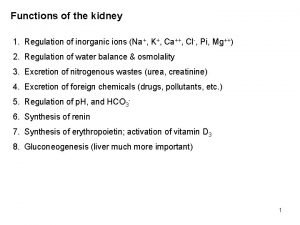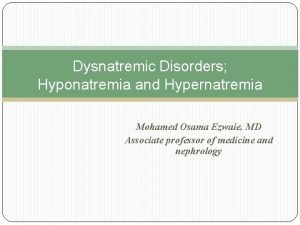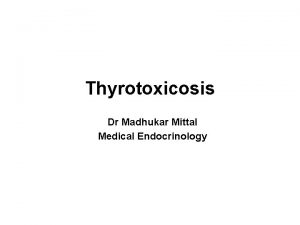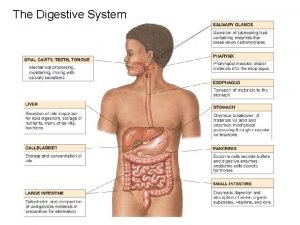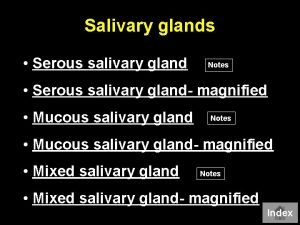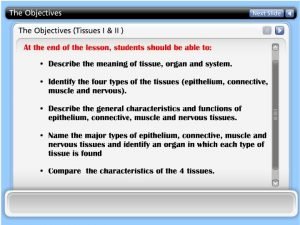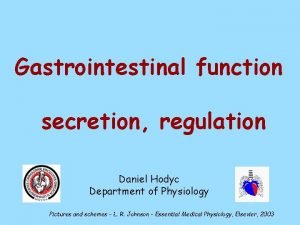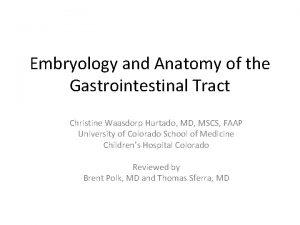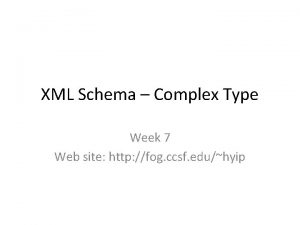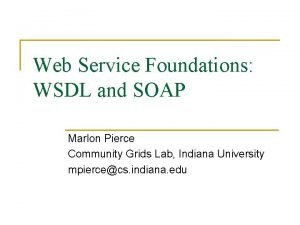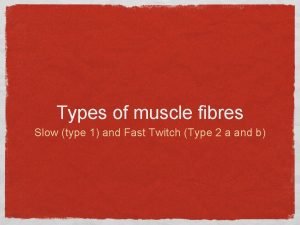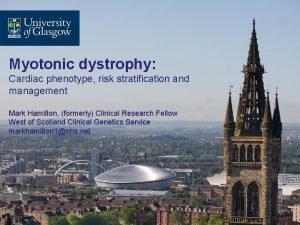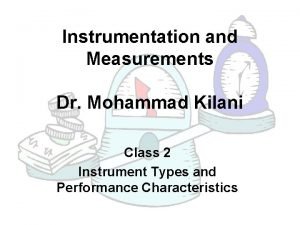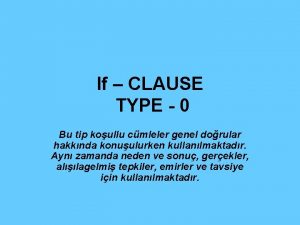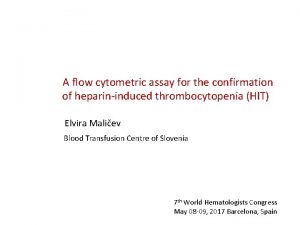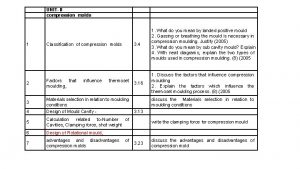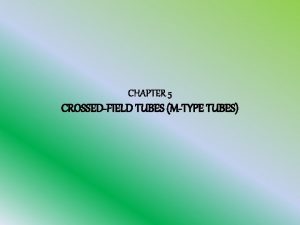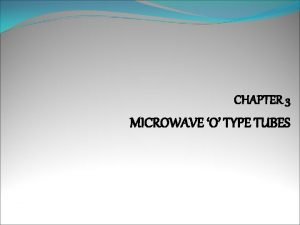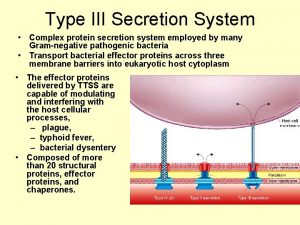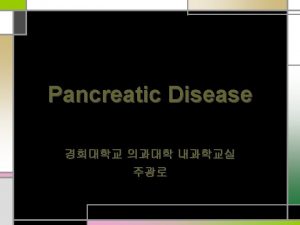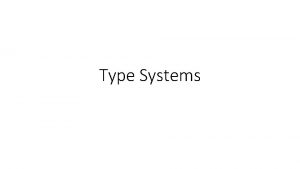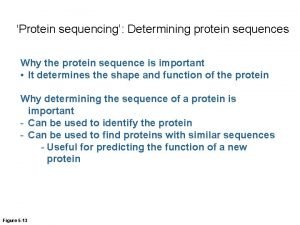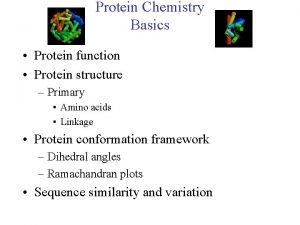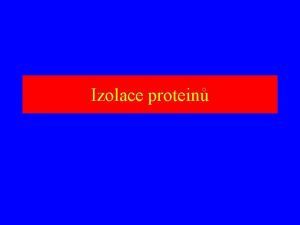Type III Secretion System Complex protein secretion system












































































- Slides: 76

Type III Secretion System • Complex protein secretion system employed by many Gram-negative pathogenic bacteria • Transport bacterial effector proteins across three membrane barriers into eukaryotic host cytoplasm • The effector proteins delivered by TTSS are capable of modulating and interfering with the host cellular processes, – plague, – typhoid fever, – bacterial dysentery • Composed of more than 20 structural proteins, effector proteins, and chaperones.

Recombinant DNA • NIH established the RAC (recombinant DNA Advisory Panel) in 1974 in response to concerns over safety of manipulating genetic material using recombinant DNA techniques. • The RAC issues recommendations to NIH Director that are then conveyed through NIH OBA (Office of Biotechnology Activities) in the form of NIH Guidelines for Research Involving Recombinant DNA Molecules • http: //oba. od. nih. gov/rdna/nih_guidelines_oba. html • Mandatory compliance for all institutions receiving NIH funds for Research involving recombinant DNA

Recombinant DNA • Recombinant DNA molecules are either: 1) molecules which are constructed outside living cells by joining natural or synthetic DNA segments to DNA molecules that can replicate in a living cell; or 2) DNA molecules that result from the replication of those described in 1). • Synthetic DNA segments which are likely to yield a potentially harmful polynucleotide or polypeptide (e. g. , a toxin or a pharmacologically active agent) are considered as equivalent to their natural DNA counterpart. – However, if the synthetic DNA segment is not expressed in vivo as a biologically active polynucleotide or polypeptide product, it is exempt from the NIH Guidelines. • Genomic DNA of plants and bacteria that have acquired a transposable element, even if the latter was donated from a recombinant vector no longer present, are not subject to the NIH Guidelines unless the transposon itself contains recombinant DNA.

IBC Approval • Principal Investigator must submit a registration document to the Institutional Biosafety Committee which contains the following information: – – (i) the source(s) of DNA; (ii) the nature of the inserted DNA sequences; (iii) the host(s) and vector(s) to be used; (iv) if an attempt will be made to obtain expression of a foreign gene, and if so, indicate the protein that will be produced; and – (v) the containment conditions that will be implemented as specified in the NIH Guidelines

Required Approval § III-A. Experiments that Require Institutional Biosafety Committee Approval, RAC Review, and NIH Director Approval Before Initiation • The deliberate transfer of a drug resistance trait to microorganisms that are not known to acquire the trait naturally § III-B. Experiments That Require NIH/OBA and Institutional Biosafety Committee Approval Before Initiation • Deliberate formation of recombinant DNA containing genes for the biosynthesis of toxin molecules lethal for vertebrates at an LD 50 of less than 100 nanograms per kilogram body weight (e. g. , microbial toxins such as the botulinum toxins, tetanus toxin, diphtheria toxin, and Shigella dysenteriae neurotoxin); exemption for E. coli K 12 (100 ng -100 g § III-C. Experiments that Require Institutional Biosafety Committee and Institutional Review Board Approvals and RAC Review Before Research Participant Enrollment • The deliberate transfer of recombinant DNA, or DNA or RNA derived from recombinant DNA, into human research participants (human gene transfer)

§III-D Experiments that Require IBC Approval Prior to Initiation • §III-D-1. Experiments Using Risk Group 2, Risk Group 3, Risk Group 4, or Restricted Agents as Host-Vector Systems • §III-D-2. Experiments in Which DNA From Risk Group 2, Risk Group 3, Risk Group 4, or Restricted Agents is Cloned into Nonpathogenic Prokaryotic or Lower Eukaryotic Host-Vector Systems • §III-D-3. Experiments Involving the Use of Infectious DNA or RNA Viruses or Defective DNA or RNA Viruses in the Presence of Helper Virus in Tissue Culture Systems • §III-D-4. Experiments Involving Whole Animals • §III-D-5. Experiments Involving Whole Plants (BL 2 P+ and above) • §III-D-6. Experiments Involving More than 10 Liters of Culture • §III-D-7. Experiments Involving Influenza Viruses

§III-E. Experiments that Require IBC Approval Simultaneous with Initiation • §III-E-1. Experiments Involving the Formation of Recombinant DNA Molecules Containing No More than Two-Thirds of the Genome of any Eukaryotic Virus • §III-E-2. Experiments Involving Whole Plants (BL 1 and 2 P) • §III-E-3. Experiments Involving Transgenic Rodents

§III-F. Exempt Experiments • • • §III-F-1. Those not in organisms or viruses §III-F-2. Those consisting entirely of DNA froma single chromosomal or viral DNA source, though one or more of the segments may be a synthetic equivalent §III-F-3. Those that consist entirely of DNA from a prokaryotic host including its indigenous plasmids or viruses when propagated only in that host (or a closely related strain of the same species), or when transferred to another host by well established physiological means. §III-F-4. Those that consist entirely of DNA from an eukaryotic host including its chloroplasts, mitochondria, or plasmids (but excluding viruses) when propagated only in that host (or a closely related strain of the same species). §III-F-5. Those that consist entirely of DNA segments from different species that exchange DNA by known physiological processes, though one or more of the segments may be a synthetic equivalent. §III-F-6. Those that do not present a significant risk to health or the environment, as determined by the NIH Director, with the advice of the RAC, and following appropriate notice and opportunity for public comment.

Helminths

Helminths (Worms) • Multicellular animals • Some are human and/or animal parasites • Eggs are small enough to pose environmental health problems from human and animal excreta in water, food, soil, etc. • Several major groups: – Nematodes (roundworms): ex. Ascaris – Trematodes (flukes; flatworms): ex. Schistosomes – Cestodes (tapeworms): pork and beef tapeworms

What is Parasitology • Lives on or in another organism its host • Symbiosis - two types of organisms living together. • Three types of symbiotic relationships • Mutualism • Commensalism • Parasitism

• Class Lobosea Human Parasitology Medical • Class Zoomastigophorea Protozoology • Class Sporozoa Medical Helminthology Medical Arthropodology • Class Ciliophora • Class Nematoda • Class Trematoda • Class Cestoda • Class Metacanthocephala • • Class Insecta Arachnida Crustacea Chilopoda

Parasites in the United States • • • Ascaris lumbricoides Necator americanus Trichinella spiralis Giardia lamblia Enterobius vermicularis

Impacts of Helminthic Parasites • >2. 5 billion helminthes infections • 1/3 of 3 billion people living below $2 per day in developing regions are infected with 1 or more heminth • School age children harbor the greatest numbers • Poor nutrition leads to reduced resistance • High calorie demand (up to 5, 000 calories/day) • Estimated 60 million people die every year


Zoonosis • Wild or domestic animals serve as reservoir hosts in transmission to man. • Sylvatic or enzootic – wild host – Trichinella spiralis - wild boar, bear, walrus • Urban or domestic - domestic animals – Trichinella spiralis - domestic pigs

Terms Describing Parasites • Ectoparasites (develop outside host) and Endoparasites (develop inside host) • Obligatory (dependent on host for survival) and Facultative (can live independent of host; also used for ability to feed on live or dead material) • Accidental or Incidental (other than normal host) • Permanent (most of life cycle in host) and Temporary (part of life cycle in host, rest freeliving) • Heteroecious (various hosts for different life stages) and Autoecious (one host) • Parasitoid (single organism as host, kills organism)

Terms Describing Hosts • Definitive (parasite passes its adult and sexual stage) • Intermediate (parasite passes its larval or nonsexual stage) • Paratenic or transport host (substitute intermediate hosts, generally due to ingestion of original host) • Reservoir host (passive carrier) • Vector (carries from one host to another)

Reproductive Potential of Parasites • Extremely complex life cycles • Reproductive system highly specialized • Small chance of any one individual living so there is a large initial reproductive output – Female Ascaris produces 200, 000 eggs /day – Many animals have both asexual and sexual cycle

Helminthes Cestodes Trematodes Nematodes Shape Segmented plane Unsegmented plane Cylindrical Body cavity No No Present Digestive tube No Ends in cecum Ends in anus Hermaphroditic, except Schistosoma which are dioecious Dioecious Oral sucker and ventral sucker Lips, teeth, filariform extremities, and dentary plates Sex hook organ compone nt Oral sucker, botridias, and double Rostellar hooks

Helminths (Worms): Some Important Ones Most acquired from ingestion of or contact with fecescontaminated soil or food • Nematodes (Roundworms): – Ascaris lumbricoides GI illness; pneumonitis – Trichuris trichuria chronic GI • Hookworms: – Ancylostoma duodenale chronic anemia – Necator americanus chronic anemia – Strongyloides stercoralis chronic anemia • Cestodes (tapeworms): – Hymenolepis nana GI illness

Ascaris lumbricoides • Large intestinal roundworm of man • In some areas in Asia, 100% of the population is infected. • Most infections light but heavy infections may occur. Reported record (5, 000) • Glycogen consumption of Ascarids in China equal to glycogen of 143, 000 tons of rice.


Roundworm: Ascaris lumbricoides

Ascaris Shedding after Antihelminthic Drug Use

Strongyloides stercoralis (Threadworms)


Family Ancylostomidae • Commonly known as hookworms • Live in intestines feed on blood and tissue fluids obtained from intestinal mucosa • Morphology-especially important copulatory bursa of male.

Necator and Ancyclostoma

Necator americanus • "The American Killer" New World Hookworm – Probably introduced by slave trading – Major impact on development of southern U. S. – In 1947 estimated 1. 5 million cases in North America – Current estimates in S. E. U. S. 4 -5


Ancyclostoma duodenale • - Old World Hookworm – Predominately found in southern Europe, – northern Africa, India, China, southeastern Asia – In mines of England Belgium


Hookworm disease • Sometimes asymptomatic-pathology depends on worm load and nutritional condition of the infected person • Disease restricted to warmer regions of world also adequate amounts of moisture • White people 10 (ten) times more susceptible to hookworm than black persons -"poor white trash"

Family Toxocaridae • Toxocara canis (dog) and Toxocara cati (cat) – common parasite of domestic dogs and cats and can be parasites of humans. • Nearly 100 % of puppies and kittens infected. 98% puppies • Adults able to repress worms. When females become pregnant, the worm is awaken and migrates to the offspring.

Family Toxocaridae • If unnatural host (small child) becomes infected, worms have a tendency to migrate throughout organs. This is known as visceral larval migrans. • Can be a very important parasite depending upon which organs it migrates into.

Guinea Worm Disease (Dracunculiasis)

Guinea Worm Disease


Family Trichuridae - Whipworms • Morphology thick relatively short, posterior end with long thread - like anterior end, whip like in appearance (Trichocephalus) thread-head used in some texts.

Trichuris trichiura • 30 -50 mm long • Produces 1000 -7000 eggs per day - eggs embryonate in soil. • When swallowed infective juvenile hatches in small intestine enters intestinal crypts. • After development reenters lumen of intestine matures. • Can live a long time (many years).



Trichinella spiralis • Causes disease trichinosis, trichiniasis, or trichinelliasis – Vague symptoms leads to misidentification – Morphology • Males 1. 4 -1. 6 mm long females 2. 8 -3. 2 mm long • Slender at anterior end • Biology – same animal can serve as definitive and intermediate host with juvenile and adults located in different organs.


Family Oxyuridae – Pinworms • Enterobius vermicularis • Small worms of colon area. • Females leave anus at night to lay eggs (contain embryonic juveniles. Severe rectal itching results. • Children often reinfect themselves. • If the anal folds are not cleaned, the worms may hatch and the larvae reenter the anus causing retroinfection.

Family Oxyuridae – Pinworms • Epidemiology – bedding, clothing, stuffed animals, become seeded with ova. Very light can be carried in the air. • Children often scratch where it itches, then insert fingers in mouth. • Footed pajamas, mittens, wash with very hot water, treat the whole family.

Tapeworms • All tapeworms are parasites • Most parasitize wild animals few important parasites of men. • Only orders Pseudophyllidea and other Cyclophyllidea contain tapeworms of importance to humans or parasites of man. • Can cause cysticercosis (Subcutaneous tissue, brain or eyes)

Most Important Species • Taenia solium • Taeniarhynchus saginatus • Echinococcus granulosus • • Echinococcus multilocularis


Taenia sp. Scolex

Taenia

Schistosoma sp. • Important parasites of man and some domesticated animals • Three species infect man • Schistosoma mansoni • Schistosoma japonicum • Schistosoma haematobium



Schistosoma japonicum. • Common in parts of Japan, China, Taiwan, Philippines, Thailand, and other parts of Southeast Asia. • Most pathogenic and most difficult to control • Located in blood vessels of small intestine. • Eggs may lodge in brain causing CNS damage, coma, and paralysis. • Low host specificity

Schistosoma mansoni • Common in Egypt, the Middle East, parts of Africa, and parts of South and Central America. • Found in portal veins draining large intestine • The sharp lateral spine is distinctive • Primary pathological effects come from the damage done by eggs.

Schistosoma mansoni • In heavy infections eggs become trapped in the mucous and submucosa of the gut and cause granuloma formation • If extensive, they can cause colon blockage and significant blood loss. • In liver can cause hepatomegaly. • Destruction of lungs and heart tissue. • Reservoir hosts are of limited or no importance.

Schistosoma haematobium • often referred to as Bilharzia after Theodore Bilharz who discovered it. • found in parts of Africa, and parts of the Middle East, southern Europe and some parts of Asia. • Found primarily in the veins of the urinary bladder. Eggs released in urine. • They are least pathogenic

Schistosome cercarial dermatitis or swimmers itch • Schistosomes of animals other than man (usually rodents and birds) try to penetrate the skin of man, they can not establish themselves in the blood vascular system of man. • Often cause a dermatitis which can be severe and in some cases life threatening. • Allergic reaction

Swimmer’s Itch

Fasciola hepatica • Commonly known as the sheep liver fluke • Important parasite of sheep and cattle (other grazers) can be found in humans. • Morphology – Large size, frequently over 30 mm long – Characteristic cone-shaped projection at anterior end followed by wide shoulders


Fasciola hepatica adult

Fasciola hepatica • Adult in bile duct of definitive host passes eggs in feces. • If eggs land in water, they hatch into miracidium that actively swims until it finds an appropriate snail. • Penetrates snail, develops into germinal sac (sporocyst), asexual stages of rediae and cercariae formed.

Fasciola hepatica • Cercariae leave snail, encyst on vegetation, and form metacercaria. • Herbivore infected when it ingests vegetation with metacercaria. • Metacercaria develop into adult penetrates gut wall, moves to the liver. • Humans infected by eating watercress that has metacercaria on it.


Fasciola hepatica Epidemiology • liver blockage and watercress consumption • Prevention - Eschewing (shunning or avoiding) watercress. • Rabbits are probably important in spreading • In some parts of southeastern United States, it is important parasite of domestic animals

Fasciolopsis buski Intestinal fluke of man • large fluke infects man when he ingests metacercaria found on vegetation including water chestnuts, bamboo, and water caltrop. • eat these raw or peel or crack with teeth. • elimination of feces (human and animal) into water and use of night soil for farming

Intestinal Fluke

Other Helmithic Parasites • Baylisascaris procyonis (Racoon Round Worm) • Human echinococcosis (hydatidosis, or hydatid disease) – caused by the larval stages of cestodes (tapeworms) of the genus Echinococcus • Hymenolepliasis (Hemnolepis nana and dimnuta) (dwarf and rat tapeworms) • Dipylidium caninum (dog tapeworm)

Filariasis • Eight Species in Humans • Wuchereria bancrofti and Brugia malayi cause lymphatic filariasis • Onchocerca volvulus causes onchocerciasis (river blindness) • Loa loa, Mansonella perstans, M. streptocerca, M. ozzardi, and Brugia timori. (The last species also causes lymphatic filariasis. ) • Vectored by insect vectors (e. g. Black Fly)



Other Helminthic Infections • Angiostrongylus spp. (rat lungworm) (nematode) – A. cantonensis (human eosinophilic meningitis) – A. costaricensis (intestinal angiostronglyiasis) • Anisakis simplex and Pseudoterranova decipiens (Anisakiasis) (nematode) • Capillaria spp. (nematode) – C. philippinensis (abdominal) – C. hepatica (liver) – C. aerophila (lung) • Clonorchis sinensis (Chinese or oriental liver fluke) • Gnathostomiasis (nematode) – Gnathostoma spinigerum and Gnathostoma hispidum

Other Helminthic Infections • Opisthorchiasis (trematode) – Opisthorchis viverrini (Southeast Asian liver fluke) and O. felineus (cat liver fluke) • Paragonimiasis (trematode) – Paragonimus spp. • Diphyllobothriasis – Diphyllobothrium latum (Fish tapeworm; largest human tapeworm) (cestode) • Heterophyasis – Heterophyes heterophyes (trematode) • Metagonimiasis – Metagonimus yokogawai (smallest human fluke)
 Type 3 secretion system
Type 3 secretion system Type 3 secretion system
Type 3 secretion system Hamlet act iii scene ii
Hamlet act iii scene ii Carrier vs channel proteins
Carrier vs channel proteins Protein-protein docking
Protein-protein docking Protein complex
Protein complex Pauline and bruno have a big argument
Pauline and bruno have a big argument Droplet infection
Droplet infection Simple, compound-complex rules
Simple, compound-complex rules The electra complex
The electra complex Psychodynamic vs psychoanalytic
Psychodynamic vs psychoanalytic Mbti breakdown
Mbti breakdown Type iii school bus
Type iii school bus Type 3 school bus
Type 3 school bus Adjusted sum of squares
Adjusted sum of squares Type iii binary compounds examples
Type iii binary compounds examples Conditional sentence type 3 example
Conditional sentence type 3 example V
V Plasm
Plasm Reabsorption
Reabsorption Regulation of tubular reabsorption
Regulation of tubular reabsorption Thyroid hormone secretion
Thyroid hormone secretion Erythropin
Erythropin Msh secretion
Msh secretion Where does secretion occur in nephron
Where does secretion occur in nephron Action of pancreatic juice
Action of pancreatic juice Pct in kidney
Pct in kidney Peritubular capillaries
Peritubular capillaries Merocrine glands
Merocrine glands Enteropancreatic reflex
Enteropancreatic reflex Components of bile
Components of bile Hydrogen secretion in kidney
Hydrogen secretion in kidney Merocrine gland
Merocrine gland H+ secretion in proximal tubule
H+ secretion in proximal tubule Gastric pits function
Gastric pits function H+ secretion in proximal tubule
H+ secretion in proximal tubule Types of hormone secretion
Types of hormone secretion Secretion
Secretion Contents
Contents Tubular reabsorption and secretion
Tubular reabsorption and secretion Severe hyponatremia
Severe hyponatremia Dr madhukar mittal
Dr madhukar mittal Introduction of excretory system
Introduction of excretory system Jejunum and ileum
Jejunum and ileum It is where most of the absorption process happens
It is where most of the absorption process happens Ducts vs glands
Ducts vs glands Hormone secretion
Hormone secretion Holocrine secretion
Holocrine secretion Saliva composition
Saliva composition Glucose stimulated insulin secretion
Glucose stimulated insulin secretion Embryology of git
Embryology of git Xsd complex type
Xsd complex type Undefined simple or complex type 'soapenc:array'
Undefined simple or complex type 'soapenc:array' Iii credit point system
Iii credit point system Alsf-1 approach lighting
Alsf-1 approach lighting Is hyper v type 1 or type 2
Is hyper v type 1 or type 2 Aceytlcholine
Aceytlcholine Type 1 type 2 error power
Type 1 type 2 error power Type 2 vs type 1 error
Type 2 vs type 1 error Rock cycle
Rock cycle Narrow band theory in sport
Narrow band theory in sport Myotonic dystrophy
Myotonic dystrophy Null and deflection type instruments
Null and deflection type instruments ıf clauses type 0
ıf clauses type 0 Hypothesis type 1 error
Hypothesis type 1 error Type 1 error vs type 2 error example
Type 1 error vs type 2 error example Static and dynamic type checking in compiler design
Static and dynamic type checking in compiler design O blood type and b blood type offspring
O blood type and b blood type offspring Type 1 vs type 2 fibers
Type 1 vs type 2 fibers Hit type 1 vs type 2
Hit type 1 vs type 2 Pot type mold & plunger type mold are the classification of
Pot type mold & plunger type mold are the classification of Blood type and body type
Blood type and body type Pot type mold & plunger type mold are the classification of
Pot type mold & plunger type mold are the classification of 0 type conditional
0 type conditional Name type compatibility and structure type compatibility
Name type compatibility and structure type compatibility Difference between o type and m type tubes
Difference between o type and m type tubes Lead inductance effect in microwave
Lead inductance effect in microwave
